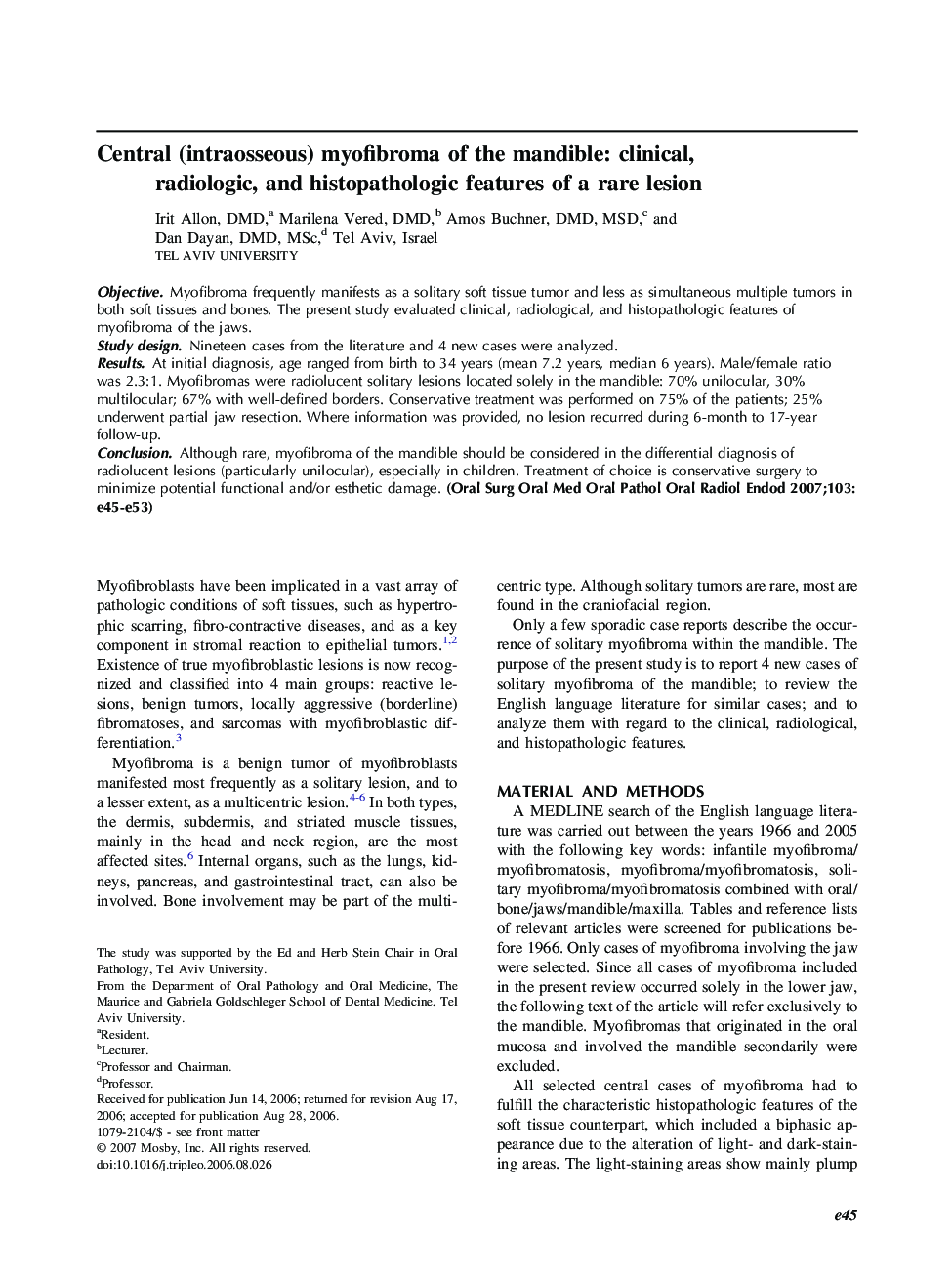| Article ID | Journal | Published Year | Pages | File Type |
|---|---|---|---|---|
| 3169622 | Oral Surgery, Oral Medicine, Oral Pathology, Oral Radiology, and Endodontology | 2007 | 9 Pages |
ObjectiveMyofibroma frequently manifests as a solitary soft tissue tumor and less as simultaneous multiple tumors in both soft tissues and bones. The present study evaluated clinical, radiological, and histopathologic features of myofibroma of the jaws.Study designNineteen cases from the literature and 4 new cases were analyzed.ResultsAt initial diagnosis, age ranged from birth to 34 years (mean 7.2 years, median 6 years). Male/female ratio was 2.3:1. Myofibromas were radiolucent solitary lesions located solely in the mandible: 70% unilocular, 30% multilocular; 67% with well-defined borders. Conservative treatment was performed on 75% of the patients; 25% underwent partial jaw resection. Where information was provided, no lesion recurred during 6-month to 17-year follow-up.ConclusionAlthough rare, myofibroma of the mandible should be considered in the differential diagnosis of radiolucent lesions (particularly unilocular), especially in children. Treatment of choice is conservative surgery to minimize potential functional and/or esthetic damage.
